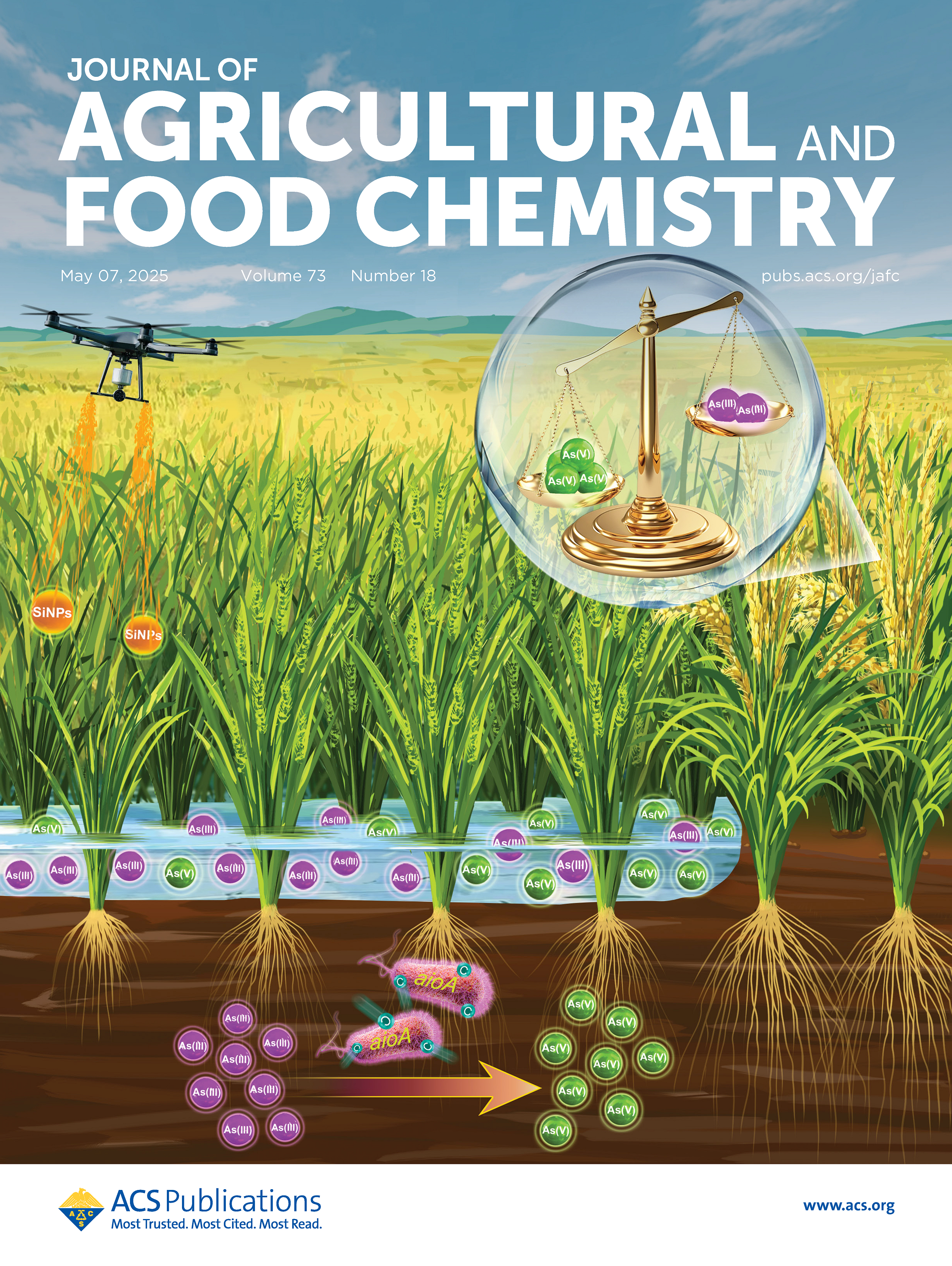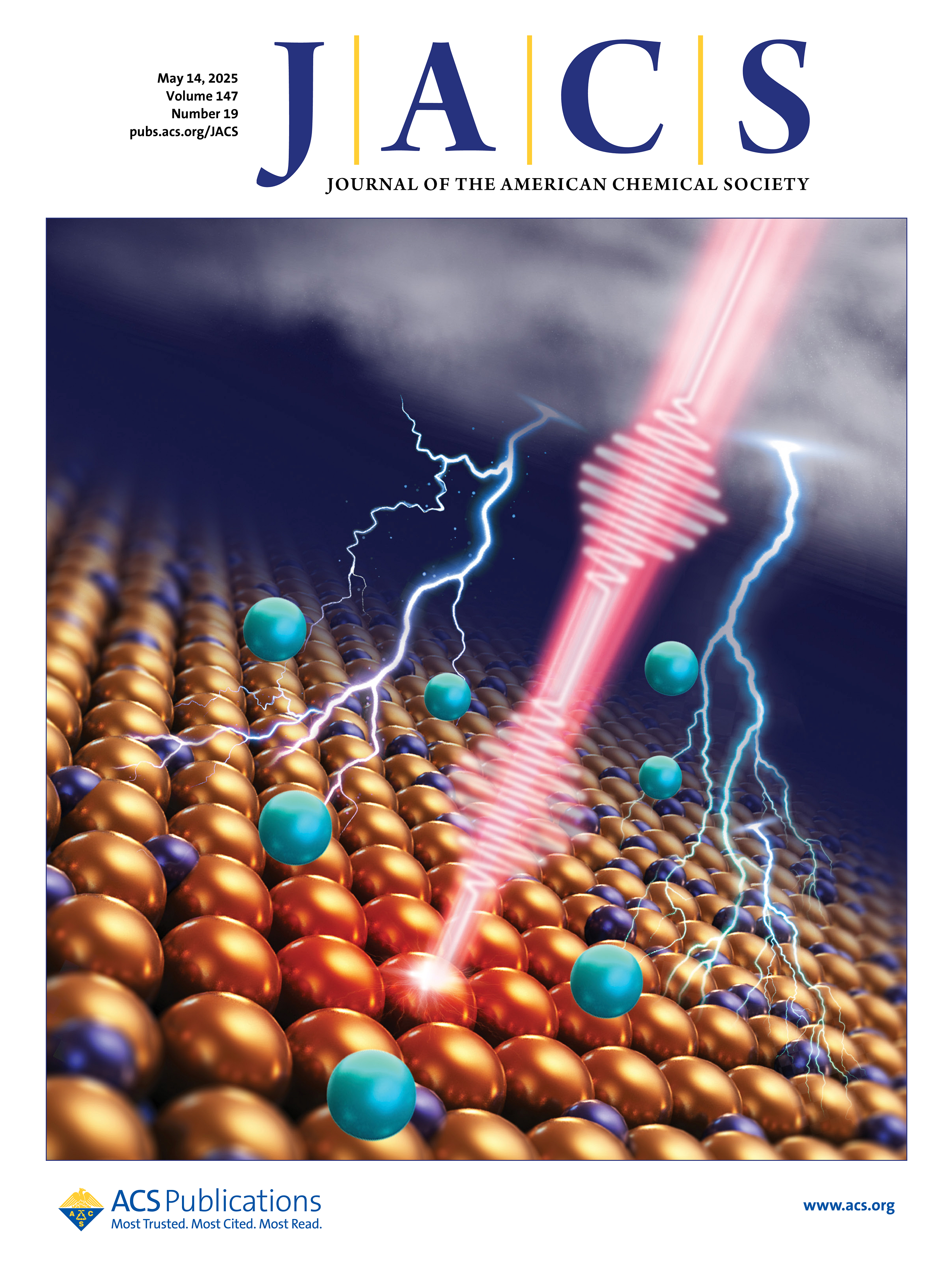博文
2025年05月嘲风作品集(一)
||


▲ Vol 08 Issue 03 | May, 2025
Machine Learning Speeds Up the Discovery of Efficient Porphyrinoid Electrocatalysts for Ammonia Synthesis
Wenfeng Hu, Bingyi Song, Liming Yang
Two-dimensional transition metal porphyrinoid materials (2DTMPoidMats), due to their unique electronic structure and tunable metal active sites, have the potential to enhance interactions with nitrogen molecules and promote the protonation process, making them promising electrochemical nitrogen reduction reaction (eNRR) electrocatalysts. Experimentally screening a large number of catalysts for eNRR catalytic performance would consume considerable time and economic resources. First-principles calculations and machine learning (ML) algorithms could greatly improve the efficiency of catalyst screening. Using this approach, we selected 86 candidates capable of catalyzing eNRR from 1290 types of 2DTMPoidMats, and verified the results with density functional theory (DFT) computations. Analysis of the full reaction pathway shows that MoPp-meso-F-β-Py, MoPp-β-Cl-meso-Diyne, MoPp-meso-Ethinyl, and WPp-β-Pz exhibit the best catalytic performance with the onset potential of −0.22, −0.19, −0.23, and −0.35 V, respectively. This work provides valuable insights into efficient design and screening of eNRR catalysts and promotes the application of ML algorithmic models in the field of catalysis.
https://onlinelibrary.wiley.com/doi/10.1002/eem2.12888

▲ Vol 59 Issue 17 | May 06, 2025
Mechanistic Insights into Cadmium Sulfide Nanoparticles-Induced Digestive Gland Damage in Corbicula fluminea: Comparison with Cadmium Ions
Kena Zhang, Quanzhi Xiao, Jianbo Jia, Yan Gao, Yanfei Zhou, Xiao-Xia Zhou, Bing Yan
The extensive use of cadmium sulfide nanoparticles (CdS-NPs), along with their natural formation through the complex biogeochemical transformation of anthropogenic cadmium ions (Cd2+), poses substantial risks to ecosystems and human health. Despite this, the mechanisms underlying the toxicity of CdS-NPs remain unclear. A key question is whether their toxicity arises from the nanoparticulate form of cadmium (Cd) or from the release of Cd2+. To explore this, we exposed freshwater clams (Corbicula fluminea) to environmentally relevant concentrations (0.01–1 mg/L) of CdS-NPs or Cd2+ for 10 days. Hematoxylin and eosin (HE) staining revealed significant damage to the digestive gland in both cases. Although CdS-NPs released some Cd2+ (≤10.4%), transcriptomic and quantitative reverse transcription polymerase chain reaction (qRT-PCR) analyses indicated different toxicity mechanisms. CdS-NPs primarily induce ferroptosis, triggered by lysosomal dysfunction that releases Fe2+ into the cytoplasm, disrupting the cellular iron metabolism. In contrast, Cd2+ primarily induces an autophagic response, as evidenced by the upregulation of autophagy-related markers and activation of apoptosis pathways linked to mitochondrial membrane permeabilization. Overall, our findings suggest that the toxicity of CdS-NPs is not solely derived from Cd2+, highlighting the need to evaluate the risks posed by metal sulfide nanoparticles to benthic ecosystems.
https://pubs.acs.org/doi/10.1021/acs.est.5c01150

▲ Vol 73 Issue 18 | May 07, 2025
Application of Silica Nanoparticles Induces Different Effects on Inorganic and Methylated Arsenic Accumulation in Rice Grains: Insights from Arsenic Transformation in Soil
Yifan Gao, Xiangyi Liao, Jungang Deng, Jingjing Zhao, Guang Yang, Siyao Yan, Luyu Liang, Jinglin Yang, Guoyong Huang, Dandan Pan, Tongxu Liu, Xiaomin Li
Silica nanoparticles (SiNPs) are promising agrochemicals for reducing pollutant accumulation in plants. However, their applications sometimes fail to reduce arsenic in rice grains. Here, we explored the mechanisms using pot experiments via foliar and soil applications, respectively. Both applications significantly decreased As(III) (19.2–35.1%) and DMA (74.4–81.3%) in grains but increased As(V) by 1.2–1.8-fold. SiNP applications reduced As(III) but promoted As(V) in porewater during the flooding period. The As(III)-oxidation gene aioA showed a 1–3 orders of magnitude higher abundance than arsenic-reduction/methylation genes, and its abundance significantly increased after both applications. SiNP applications facilitated the release of Fe-bound organic carbon into porewater and promoted bacterial growth and As(III) oxidation, leading to high As(V) availability for rice uptake. Nevertheless, foliar spraying performed better than soil amendment in reducing total arsenic in grains by inhibiting stem/nodes-to-grain translocation. Our findings highlight the microbial arsenic transformation in soil regulated by SiNPs and demonstrate the advantages of foliar spraying in the arsenic-contaminated paddy field.
https://pubs.acs.org/doi/10.1021/acs.jafc.5c00644

▲ Vol 147 Issue 19 | May 14, 2025
Coulomb Field-Driven Desorption/Ionization by Femtosecond Laser for Mass Spectrometry Detection and Imaging
Heng Zhang, Jingkai Luo, Qi Zhang, Yizhu Xu, Zhibin Yin, Wei Hang
Surface-assisted laser desorption/ionization (SALDI) offers promising prospects for mass spectrometry detection and imaging of small biomolecules, as it addresses most of the matrix-related issues encountered in conventional matrix-assisted laser desorption/ionization (MALDI). Currently, nearly all of the fundamental aspects and applications of SALDI depend on nanosecond (ns) lasers, whereas few efforts have been made to integrate ultrafast femtosecond (fs) lasers with SALDI. Therefore, the intrinsic fundamental principle remains poorly understood. Herein, a novel surface-assisted femtosecond laser desorption/ionization mass spectrometry (fs-SALDI-MS) platform was developed, which significantly reduces analyte fragmentation and preserves molecular integrity. Spectral interferences from surface-assisted materials and alkali-metal adducts are absent in fs-SALDI mass spectra. Ion survival yields continuously increase with decreasing laser pulse widths from 5 ns to 600 fs, highlighting a gradual transition from thermal to nonthermal effects. A lower absolute limit of detection down to ∼3 amol for representative antifungal and psychotropic drugs and clearer visualization of ultratrace drug residues on latent fingerprints can be achieved, indicating that fs-SALDI results in gentler and more efficient detection/ionization processes than mainstream ns-SALDI. The biological applicability of this method was further validated through 10 μm-spatial-resolution lipid imaging of mouse brain sections. In short, a novel Coulomb field-driven desorption/ionization mechanism is proposed for fs-SALDI, opening new avenues for the development of emerging fs-SALDI techniques with superior analytical performance.
https://pubs.acs.org/doi/10.1021/jacs.4c18652
<静远嘲风动漫传媒科技中心>设计制作

购书链接:
☆科学的颜值:学术期刊封面故事及图像设计
https://item.jd.com/12802188.html
☆科技绘图/科研论文图/论文配图设计与创作自学手册:CorelDRAW篇
https://item.jd.com/13504674.html
☆科技绘图/科研论文图/论文配图设计与创作自学手册:Maya+PSP篇
https://item.jd.com/13504686.html
☆科技绘图/科研论文图/论文配图设计与创作自学手册:科研动画篇
https://item.jd.com/13048467.html#crumb-wrap
☆SCI图像语法-科技论文配图设计使用技巧
https://item.jd.com/10073529532924.html?bbtf=1

学习更多绘图教程关注:


https://wap.sciencenet.cn/blog-519111-1491802.html
上一篇:2025年04月嘲风作品集(二)
下一篇:2025年05月嘲风作品集(二)